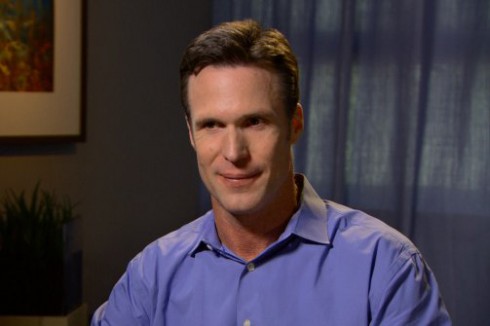L.A. Shrink’s Dr. Greg Cason’s real life patient weighs in on watching his therapist on TV
The first thing you should know about Bravo’s therapist reality show L.A. Shrinks is that all the patients were hired from a casting call. It’s not that their problems and therapy aren’t real (though there’s the very real chance things may be made up and/or manipulated for TV,) but these people definitely weren’t plucked from the counselor’s list of appointments. No one went into to see their therapist and ended up being pitched a reality show.
We’ve seen therapy on TV plenty times before by now, but the patients are usually already celebrities who agree to show some of their most vulnerable moments on television. We’ve seen the likes of Bethenny Frankel and Farrah Abraham cry, share their biggest fears and deepest feelings, and even get rehab treatment. Usually famous people (especially reality stars) already their dirty laundry floating around, and these therapy sessions can be their chance to show their humanity and account for certain things. But watching therapy sessions with formerly private citizens is kind of a new thing, and newer still is watching the personal drama of the therapists themselves.
But these doctors do have real patients, and television writer Mike Chesseler was shocked when he went to see his therapist Dr. Greg Cason to lament over a lost television pilot to find out that Dr. Greg had a pilot of his own. Mike wrote about his surreal experience of watching his shrink on the television screen for The Daily Beast, and his thoughts are intriguing.
Dr. Greg told Mike that he envisioned the show to be a reality version of the wonderfully tranquilizing fiction therapy show In Treatment which aired a few years ago on HBO and starred Gabriel Byrne. That’s a lovely idea, but whatever L.A. Shrinks is, it’s definitely not like In Treatment.
Chesseler is horrified by the patients that were cast, calling them “hysterical exhibitionists,” but he’s even more disturbed when the camera follows the therapists around in their personal lives, especially his own therapist. “But I can’t stop watching. Well, I can’t stop watching Dr. Greg’s segments,” he says.
I had discussed my issues about the artifice of the psychotherapeutic dynamic with Dr. Greg early on, and he said he was willing to answer questions about himself inasmuch as it would be helpful to my own therapy. So I did know a little about Dr. Greg’s personal life, but in a fairly vague way. Well, be careful what you wish for, because I find watching this show like a TMI speedball.
This reality show was like blowing the barn doors off of Dr. Greg’s air of mystery, and not just for Mike and current patients, but for future patients as well. Mike decided to temporarily stop seeing Dr. Greg went he couldn’t stop talking about the show during a session he had after it was done. Dr. Greg said he’s welcome to come back, and even read a rough draft of Mike’s article before it was published.
In the end, the patient offered up a diagnosis of his therapist:
“I think Dr. Greg’s decision to do the show was probably the result of a bit of a midlife crisis leavened with a little willful naiveté. But again, I’m just an amateur.”
As for Dr. Greg, he explained out.com why he decided to do the show, and his decisions’s affect on his colleagues and patients:
“Therapists are a judgmental batch. I hate to say it, but those bitches will be talking about us behind our backs, as well as our fronts. I am worried about how my patients will react. I’ve already lost some when I told them the show was coming up and they didn’t want a therapist who was on TV. My reputation may change, but I tell my friends and patients to live “full throttle lives,” so I hope if they see that I’m willing to go out on a limb, to put it out there, I will be a model for others.”

